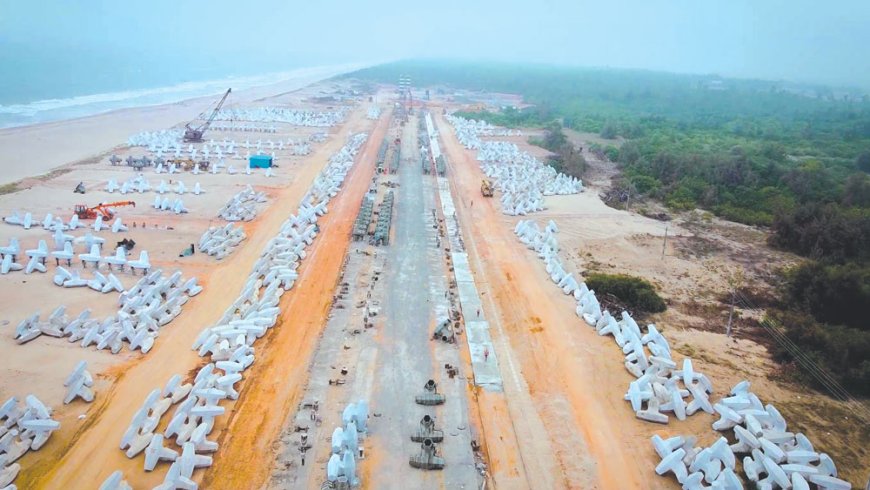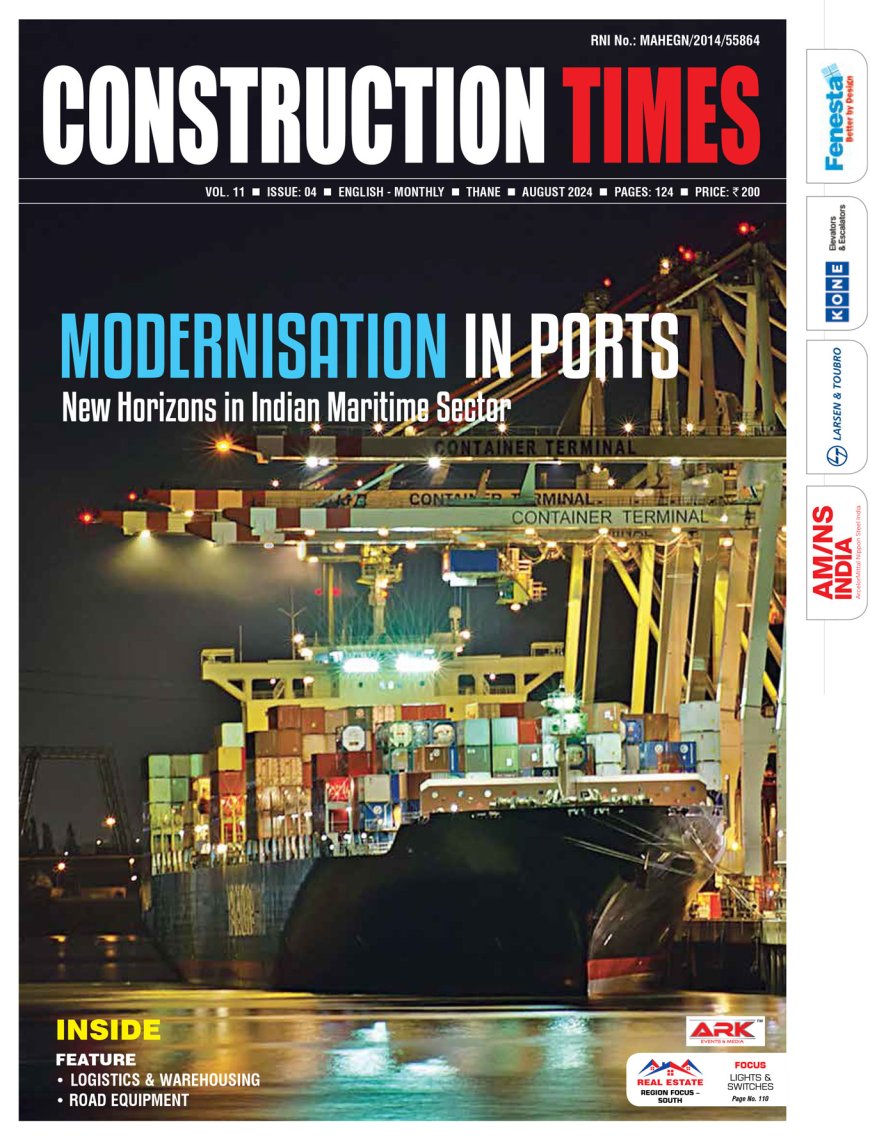Most Indian ports are strong logistical hubs for international shipping lines.

Dr. Anil Kumar Yendluri,
Managing Director, Vishwa Samudra Engineering
How do you view the performance of Indian ports? How are you experiencing the progress this year?
Over the years, we have seen the growth of Indian ports at a strong rate year on year, mainly due to the increase in consumption and trade. India’s maritime transport is responsible for almost 95% of India’s trading by volume and 70% by value. This happens through the 12 major ports and 200+ notified minor and intermediate ports across the 7,516 km coastline that we have, making Indian the 16th largest maritime country in the world.
The progress this year has been very affirmative. In FY24, all key ports in India handled close to 817 million tonnes (MT) of cargo traffic, a strong increase from FY23. Also, India’s merchandise exports in FY23 were at US$451 billion from US$417 billion in the previous year. Both these are strong indicators of India’s positive growth in the ports sector.
The Ministry of Ports, Shipping and Waterways and the Government of India have been instrumental in this meteoric growth in addition to laying out robust plans across the sector. Under the National Perspective Plan for Sagarmala, six new mega ports will be developed in the country and has a forecasted allocation of investing US$82 billion in port projects by 2035.
In addition to that, the Indian Government has allowed Foreign Direct Investment (FDI) of up to 100% under the automatic route for port and harbour construction and maintenance projects and has facilitated a 10-year tax holiday to enterprises that develop, maintain, and operate ports, inland waterways, and inland ports.
The government has also taken several measures to improve operational efficiency of the ports through mechanisation, deepening the draft and speedy evacuations. All these contribute immensely to the growth of the port sector.

What is your overview of Indian ports improving their performance on a global level?
Being a country with one of the longest coastlines and strong support from the Ministry of Shipping, Ports and Waterways, Indian ports have certainly left a strong global footprint. Indian ports are vital gateways to and from Asia for international trade, mainly because of their geographic location: facilitating efficient trade routes by connecting the East to the West, thereby making them indispensable in fostering global economic ties. Most Indian ports are also strong logistical hubs for international shipping lines and can handle diverse types of cargo, from bulk shipments of raw materials to containerized goods. This versatility makes them as adaptable players in the global supply chain, enabling them to adapt to varied demands of international trade partners.
Two other areas where Indian ports have been performing well in the recent past are:
Technology adoption & modernization: Major Indian ports have embraced technology in their systems and processes with the integration of digital platforms, automated systems, and state-of-the-art AI infrastructure enhancing efficiency, reducing turnaround time, and elevating their competitiveness on the global stage.
Maritime security – ensuring safe and secure sea routes, fostering trust among trading partners and promoting a stable global trade environment.
For the first time, 9 Major Ports of India made it to the Global Top 100 by World Bank and S&P Global Marketing Intelligence. Visakhapatnam Port made it to the Top 20 Ports of the World at 19 in 2023, recording a marked improvement from 115 in 2022.
What is your view on port infrastructure developments happening in the country?
Port infrastructure has always been a key sub-set of overall infrastructure development plans, enhancing trade and employment. In the recent Budget, the Ministry of Ports, Shipping and Waterways has allocated Rs 2,377.49 crore for 2024-25, reflecting an increase from last year's Budget. Although the prime focus is on consolidating existing projects, this allocation is set to enhance port infrastructure, improve cargo handling capabilities, and develop new ports to accommodate the growing maritime trade. This investment will also support the Sagarmala Project, aimed at port-led development, and initiatives to promote inland waterways as a viable mode of transportation. These plans highlight the importance given to ports in India by the Government of India.
What are the key contributions of the company to the port developments of the country?
We have named the company Vishwa Samudra, which highlights the importance we give to develop maritime infrastructure all over the world. We have had the experience of developing and operating a greenfield port from scratch – Krishnapatnam Port, from 2008 to 2020, which is the second-largest private port in India and one of the fastest growing ports in India.
Currently we are constructing a deep-water port in Srikakulam, in the state of Andhra Pradesh. Being a greenfield, all-weather and multipurpose port, this port will bring immense benefits not only to the district of Srikakulam or state of Andhra Pradesh, but also to the entire country strengthening trade and commerce on the east coast.

What are the challenges and opportunities for the company in the Indian ports sector?
The Government of India has given great impetus for the infrastructure development of the country. With an allocation of Rs 2,377.49 crore in the Budget 2024-25, the government has drawn up elaborate plans for the construction of new ports and to increase the capacities of existing ports. The Central Government has big plans for the development of the Vadhavan Port in Maharashtra. The Government of Andhra Pradesh is developing three new greenfield ports at Mulapeta, Machilipatnam and Ramayapatnam. The Tuticorin Port has plans to develop a big greenfield container terminal. The Government of India and Adani Group have developed and started an international transhipment terminal at Vizhinjam. Other maritime states have also drawn up plans to develop greenfield ports. There are also plans for developing a mega port in Galathea Bay in the Nicobar Islands. Under the Sagarmala scheme, Indian ports and the Railways have plans to improve the port connectivity and to modernize port operations.
These ambitious plans shall be properly executed through timely support with robust decision making and funding support by the respective governments. Many a times we see the process slowed down and getting delayed due to red-tapism. All such hinderances need be addressed jointly by the different ministries of the governments and the developers. Litigations arising out of such complex projects shall also be handled in a professional and time-bound manner, so that we see these projects completed well within the period without any time and cost overruns and the fruits of these developments are enjoyed by the people of this great nation.















